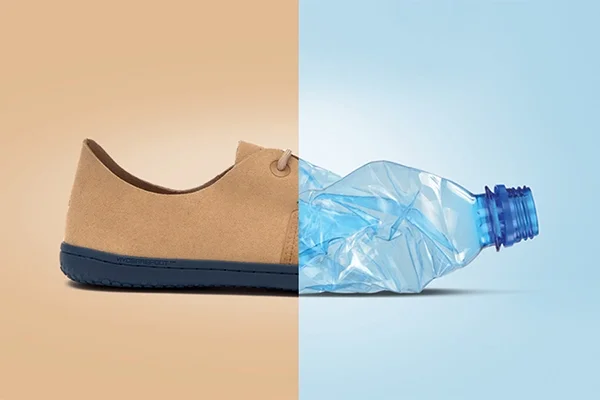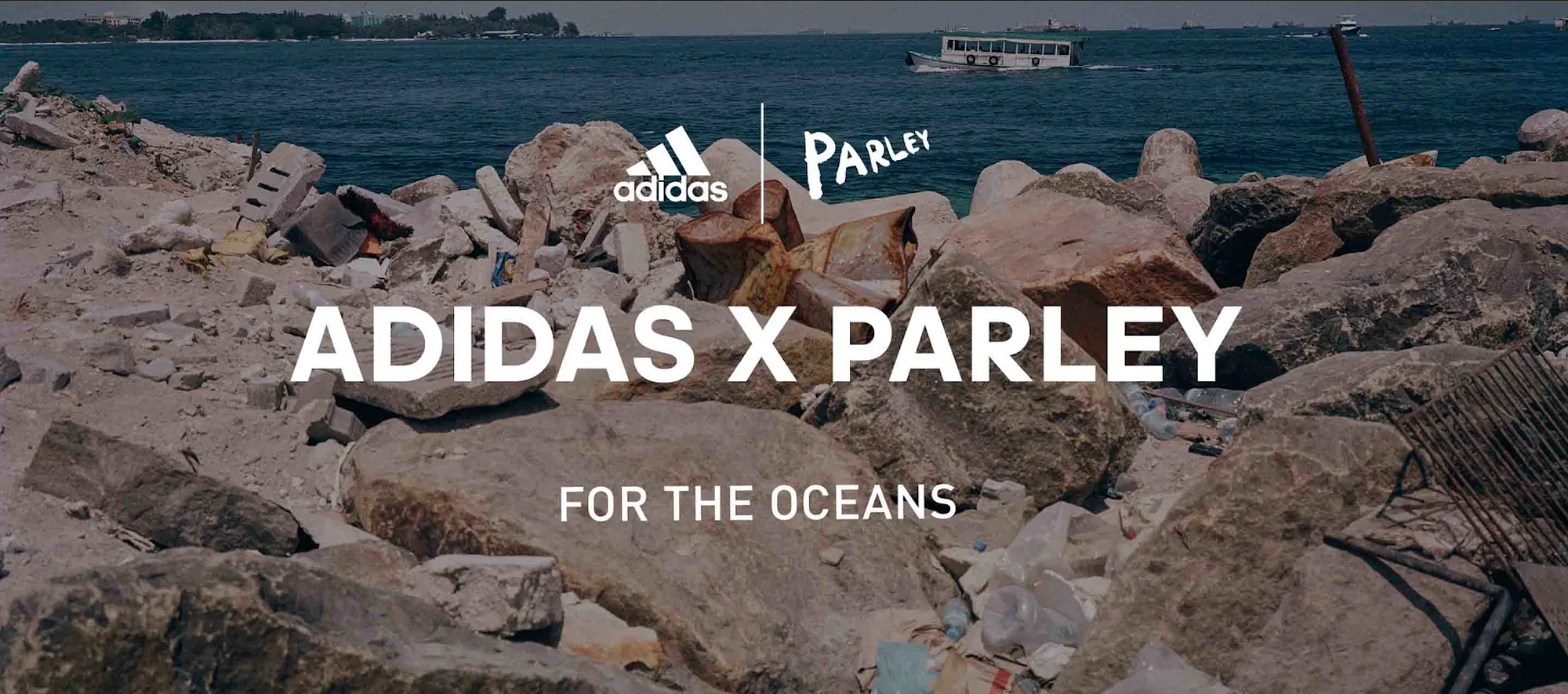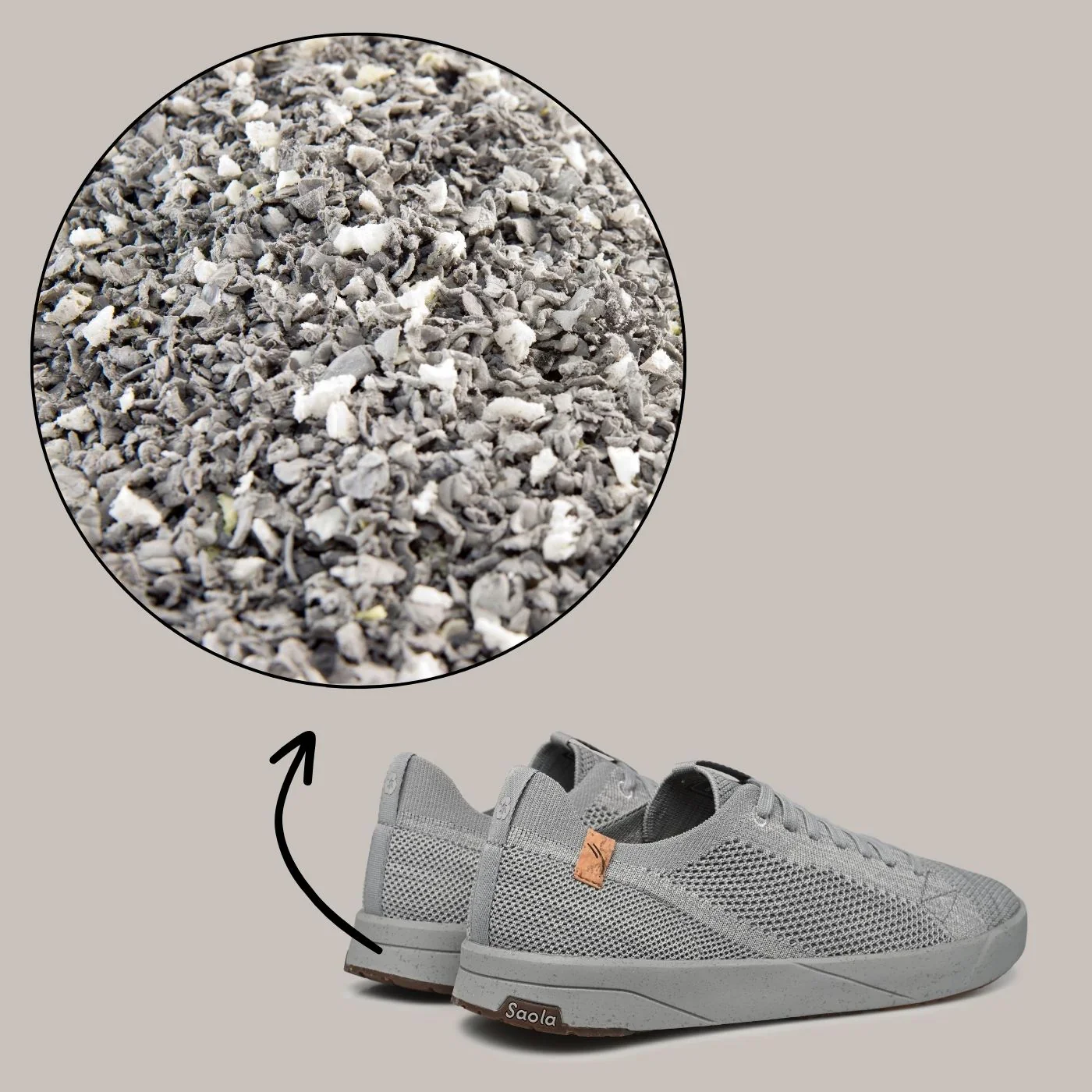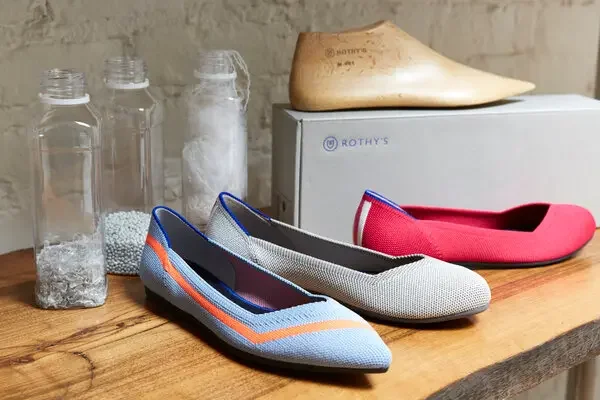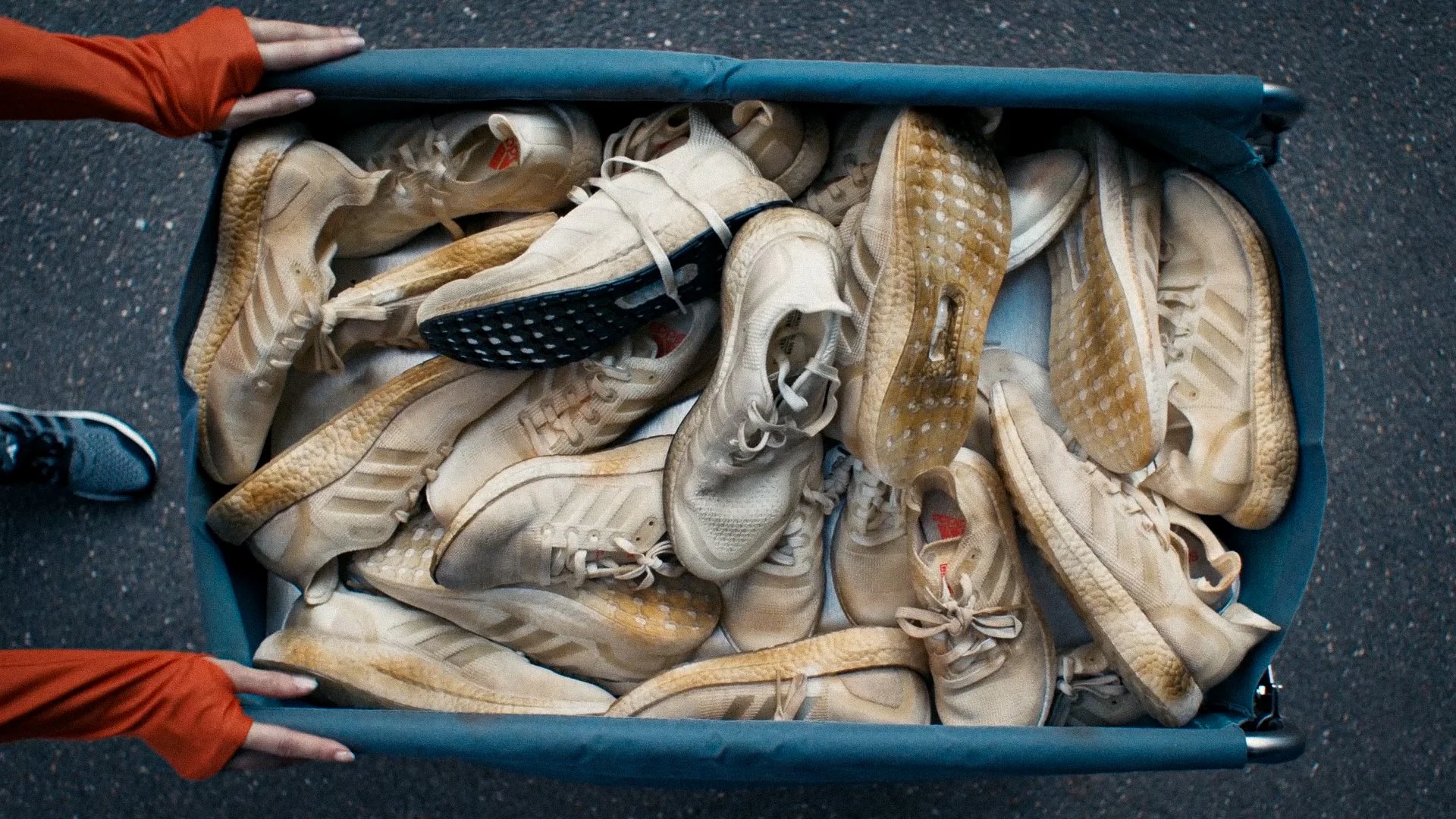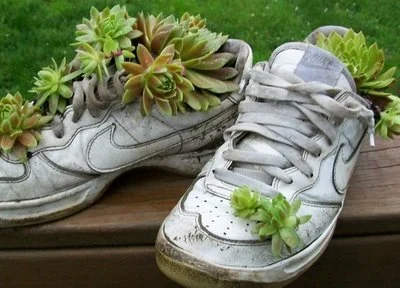From Trash To Trend: How Sneakers Are Saving The Planet
Sneakers That Do More Than Look Cool
What if your sneakers could help clean up the planet?
What if every step you took helped turn trash into something new?
Today, that’s not a dream — it’s real. Around the world, people are making shoes from old plastic bottles, ocean waste, cork, and even sugarcane. These sneakers aren’t just comfortable. They are helping protect the Earth.
Fashion is changing. And sneakers are leading the way.
Image From Vivo Barefoot
The Problem With Regular Sneakers
Most sneakers look great on the outside. But the truth is, they can hurt the planet.
Normal shoes are made with plastic, glue, and foam that come from oil. Making them uses a lot of energy and water. When people throw them away, they often end up in landfills or get burned.
A single pair of sneakers can take more than 1,000 years to break down. That means every old shoe ever made could still be sitting somewhere in the ground.
Big factories that make shoes also create pollution. The smoke and waste hurt the air and water around them.
That’s why sneaker companies started asking a big question:
“How can we make shoes that don’t hurt the planet?”
Turning Trash Into Treasure
What if trash wasn’t really trash?
What if old plastic bottles and fishing nets could become something new?
That’s what some amazing brands are doing.
Adidas x Parley for the Oceans makes sneakers using plastic bottles found in the ocean. Each pair helps remove about 11 plastic bottles from beaches and waters.
Nike’s Move to Zero program turns old sneakers and factory scraps into new shoes.
Allbirds uses wool, sugarcane, and castor beans to make shoes that feel soft and leave a small footprint.
These brands are proving that “eco-friendly” can still mean “cool.”
It’s not just about cleaning the planet. It’s about rethinking what fashion can be.
Image From SOALA
How a Recycled Sneaker Is Born
Let’s imagine your sneaker’s life story — from trash to trend.
Collecting the waste:
Plastic bottles and fishing nets are collected from beaches and cities.Breaking it down:
The plastic is cleaned, shredded, and melted into threads.Weaving the fabric:
Those threads are spun into fabric that looks and feels just like regular sneaker material.Making the shoe:
The new material is shaped, cut, and stitched into sneakers — ready for someone to wear.
It’s like giving garbage a second life.
These steps take creativity, science, and care. But the result is something special: sneakers that help people walk lighter on the planet.
Why Sneakers Matter
You might wonder, “It’s just shoes. Does it really make a difference?”
Yes — it does.
The sneaker market is huge. People buy billions of pairs every year. That means every small change adds up to something big.
If millions of shoes are made with recycled or natural materials, that means:
Less plastic ends up in the ocean.
Less waste goes to landfills.
Less energy and water are used.
Sneakers are more than fashion. They’re a symbol of how we can change the way we make and buy things.
Meet the Planet’s Favorite Sneakers
Here are a few of the top brands making sneakers in new, Earth-friendly ways:
Adidas x Parley
Adidas teamed up with an ocean group called Parley for the Oceans. Together, they collect plastic waste from beaches and turn it into new sneakers. Each pair helps clean the ocean.
Allbirds
Allbirds is famous for soft, simple sneakers made from wool and sugarcane. Their shoes are comfy, stylish, and kind to the planet. They also show customers how much carbon each shoe makes — like a “nutrition label” for fashion.
Veja
Veja sneakers come from France and are made with organic cotton, wild rubber from the Amazon, and recycled plastic bottles. They pay fair wages and use natural materials.
Nike Move to Zero
Nike is one of the biggest brands working to go green. Their “Move to Zero” line uses recycled foam and yarn. They even reuse old shoes to build playgrounds!
Rothy’s
Rothy’s makes shoes from recycled plastic bottles. The fabric feels soft and stretchy, and every pair can be washed to stay fresh.
These brands prove that doing good for the planet doesn’t mean giving up style.
The Power of Design
Sneakers aren’t just made differently now — they’re designed differently too.
Designers use computers to make shoes that waste less fabric. Some use 3D printers to create exact shapes so nothing is thrown away. Others build shoes that can be taken apart and recycled again later.
For example:
Nike’s ISPA Link sneakers use no glue. Every part can be removed and reused.
On Running’s Cyclon shoes are made from one single material so they can be fully recycled.
This kind of design thinking is called circular fashion.
It means making things that can come back around — never wasted, never forgotten.
The Sneaker Revolution
People everywhere are joining the sneaker revolution.
Influencers post their favorite eco-sneakers on TikTok.
Athletes talk about wearing shoes that help the planet.
Even fashion shows now feature sneakers made from recycled or natural materials.
Sneakers are becoming a way to share a message — that we care about the world we walk on.
And here’s the best part: sustainable sneakers look amazing. Earth tones, simple shapes, soft fabrics — they fit perfectly with the natural, cozy style people love today.
The Social Side of Sneakers
Sneakers are not just about the planet. They’re also about people.
Some brands use their sales to help communities.
TOMS, for example, gives part of its profits to health and education programs.
Veja works directly with small farmers in Brazil to pay fair wages.
Adidas supports projects that protect coral reefs and clean up beaches.
These companies show that business can be about more than money.
It can be about kindness.
When brands care about both people and the planet, everyone wins.
How You Can Help the Planet With Your Shoes
You don’t have to be a designer to make a difference. You can start right in your closet.
Here are some easy ways to make your sneaker choices smarter:
Buy less, choose well. Pick sneakers you really love and will wear a long time.
Support eco-friendly brands. Look for companies that talk about sustainability.
Take care of your shoes. Clean and store them so they last longer.
Recycle or donate. When you’re done with a pair, don’t toss them. Give them to someone who needs them or a recycling program.
Learn the story behind your shoes. Check if they use recycled materials or help workers.
Every small step counts — literally.
What Happens to Old Sneakers
When sneakers wear out, they don’t have to be trash.
Some companies have special recycling programs:
Nike’s Reuse-a-Shoe program grinds up old sneakers and turns them into new products like playgrounds or tracks.
Adidas’s Made to Be Remade sneakers can be sent back, melted down, and turned into new pairs.
You can also give sneakers a second life by donating them to groups that send shoes to people in need.
Old sneakers can even become art. Some artists turn old soles and laces into sculptures to show how fashion and creativity can work together.
So the end of a sneaker doesn’t have to be the end of its story.
The Role of Consumers
You might not think your choices matter, but they do.
Every time you buy, wear, or share something, you send a message.
When more people buy from sustainable brands, companies notice.
When we ask for recycled or fair-made shoes, brands listen.
That’s how fashion changes — not just from the top, but from all of us.
Being a conscious shopper doesn’t mean being perfect. It just means trying your best.
Why This Trend Is Here to Stay
Some people think sustainability is just a trend, but it’s not. It’s the future.
Younger generations care deeply about the environment. They want to look good and do good. That’s why sustainable sneakers are not just a style — they’re a movement.
As more people learn how clothes and shoes are made, they start to ask better questions. They start to care. And that caring leads to action.
In a few years, almost every brand will have a sustainable line — because that’s what people want.
Sneakers started it. And soon, the rest of the fashion world will follow.
What the Future of Sneakers Looks Like
The future of sneakers is bright — and green.
Scientists are creating new materials that can grow back, like mushrooms that turn into leather or plants that make rubber. Designers are testing shoes that can be composted, so they return to the earth when you’re done.
Brands are even making digital sneakers that exist only online. You can wear them in games or virtual spaces, which means no waste at all.
The future of fashion is creative, smart, and sustainable.
Why This Matters
Sneakers are more than shoes. They are symbols of change.
They show how something small can lead to something big.
When we choose sneakers made from recycled plastic or natural materials, we help clean oceans, save water, and protect animals.
When we support fair brands, we help workers and communities.
When we talk about these things, we inspire others to care too.
It’s not about being perfect — it’s about taking steps that matter.
Image From GreenPHL
Walking Toward a Better Tomorrow
The next time you tie your sneakers, think about what they stand for.
Are they just shoes — or are they part of something bigger?
Fashion has power. It can harm, or it can heal.
And sneakers are showing us how to move in the right direction.
Every step counts. Every choice adds up.
And maybe, just maybe, one day we’ll look down at our feet and see not just style — but hope.
Because the best kind of sneaker isn’t just one that looks good.
It’s one that helps the world we walk on.
From Trash to Trend
Once, we threw things away without thinking.
Now, we’re learning to turn those things into something beautiful.
Sneakers made from trash are proof that fashion can change — and so can we.
When we recycle, reuse, and rethink what we wear, we make fashion part of the solution instead of the problem.
So lace up your sneakers and take a step toward a cleaner, kinder future.
Because saving the planet never goes out of style.
References
Adidas. (2024, March 5). Adidas and Parley: Turning ocean plastic into performance sportswear. Adidas Newsroom. https://news.adidas.com/sustainability/adidas-and-parley-turning-ocean-plastic-into-performance-sportswear/s/
Allbirds. (2024, February 20). Sustainability at Allbirds. https://www.allbirds.com/pages/sustainability
Nike. (2023, November 14). Move to Zero: Nike’s journey toward zero carbon and zero waste. Nike Purpose. https://purpose.nike.com/move-to-zero
Veja. (2023, December 7). Our materials and practices. Veja Store. https://www.veja-store.com/en_us/sustainability
Rothy’s. (2024, January 15). Sustainability at Rothy’s. Rothy’s Official Site. https://rothys.com/pages/sustainability
On Running. (2023, October 9). Cyclon: The fully recyclable running shoe. On. https://www.on.com/en-us/cyclon
TOMS. (2024, April 3). Impact report: Using business to improve lives. TOMS Official. https://www.toms.com/us/impact-report
Fashion Revolution. (2023). Who made my clothes? Fashion Revolution Foundation. https://www.fashionrevolution.org/
Parley for the Oceans. (2024). Ocean plastic program. https://www.parley.tv/ocean-plastic-program
Environmental Protection Agency. (2023, September). Textile waste: Facts and figures. United States Environmental Protection Agency. https://www.epa.gov/facts-and-figures-about-materials-waste-and-recycling/textiles-material-specific-data
Image Citations
VivoBarefoot. (2023). Shoes made from recycled plastic bottles [Photograph]. VivoBarefoot Blog. https://www.vivobarefoot.com/us/blog/shoes-made-from-plastic-bottles
Born to Live Barefoot. (2022). Pile of discarded shoes and clothes illustrating shoe pollution [Photograph]. Born to Live Barefoot. https://borntolivebarefoot.org/living-barefoot-is-one-small-step-to-help-end-shoe-pollution/
Araujo, D. (2023). Adidas x Parley for the Oceans campaign image [Photograph]. Medium. https://medium.com/@deborah.araujo/adidas-x-parley-a-mission-for-our-oceans-df1123298009
Saola Shoes. (2023). Recycled material turned into eco-friendly sneakers [Photograph]. Saola Sustainable Shoes. https://saola.com/pages/sustainable-shoes
The New York Times. (2021). Rothy’s sustainable shoes made from recycled materials [Photograph]. The New York Times. https://www.nytimes.com/2021/12/20/business/dealbook/havaianas-rothys-alpargatas.html
Hula Global. (2023). Circular fashion infographic showing reuse and recycling process [Graphic]. Hula Global Blog. https://hulaglobal.com/blog/what-is-circular-fashion/
Causeartist. (2023). TOMS sustainable and ethical shoes [Photograph]. Causeartist. https://www.causeartist.com/case-study-toms-shoes/
Adidas. (2023). Adidas Made to Be Remade recycling program shoes [Photograph]. Shorty Awards. https://shortyawards.com/8th-impact/made-to-be-remade
GreenPhl. (2023). Recycled sneakers with succulents growing inside [Photograph]. GreenPhl. https://greenphl.com/recycle/recycle-your-old-sneakers/
